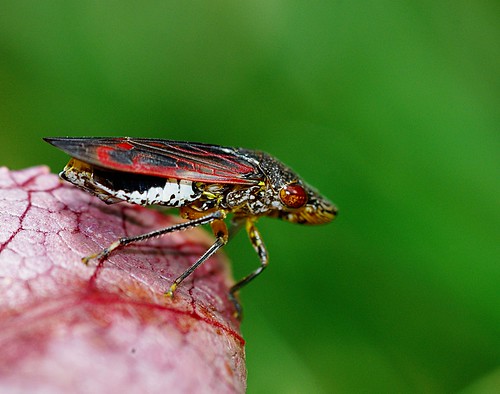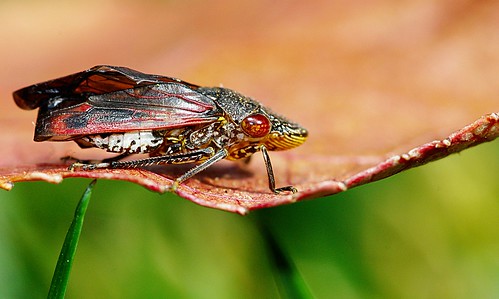yeatzee
Well-known member
Both are decent crops:




Last edited by a moderator:



Thanks Katnapper!Vivid and detailed, nice shots.Interesting, colorful looking insect!
Indeed this little guy was extremely fast. I'd take a shot with him in the middle of the frame and right after I press the shutter he would disappearYou are correct Yeatzee. I believe it is called a "Bullet" and for a good reason. They are very fast! (of course when their wings are messed up)










Leafhoppers can range from 2mm to 15mm or so. Not sure how long his though.Wow, that thing is cool! I love the shot!How big are they, mm wise?
This little guy was at first but he settled down :lol:Most of them are small. I see them in the yard all the time and they are very hard to catch.
+1Great! pic's Tanner!I always see candy striped leaf hoppers around my way.
I can only imagine the frustration you endured :lol:Great photos, love the vivid colors. Back before I learned of the easiness that is the fruitfly, I used to hand catch leaf hoppers to feed my mantis nymphs.
Lawls that is one way of putting it. Oddly it was not catching them that was the greatest pain but feeding. They aren't good feeders at all since they are so tiny and if you pop them in a cage they pretty much settle in one spot then don't move. If you try then poking them into motion they take a massive flying leap, settle and don't move again. This of course can result in problems of baby mantis even knowing of their existence. I used to get those large clear plastic pill holders, pop a hole or two into each square, and stick the nymphs in there with the hoppers to get them to eat. Since the space was so microscopic it insured the mantis would discover its food. Then once they ate I would stick them back in their proper enclosure. Ah, the memories of my confused youth. :wacko:I can only imagine the frustration you endured :lol:
Omg... :lol: and you had how many nymphs to feed like that? :huh:Lawls that is one way of putting it. Oddly it was not catching them that was the greatest pain but feeding. They aren't good feeders at all since they are so tiny and if you pop them in a cage they pretty much settle in one spot then don't move. If you try then poking them into motion they take a massive flying leap, settle and don't move again. This of course can result in problems of baby mantis even knowing of their existence. I used to get those large clear plastic pill holders, pop a hole or two into each square, and stick the nymphs in there with the hoppers to get them to eat. Since the space was so microscopic it insured the mantis would discover its food. Then once they ate I would stick them back in their proper enclosure. Ah, the memories of my confused youth. :wacko:
Only around 5-15, which would eventually have been weeded down to the few I decided on to keep as pets. The rest would have been released since the ooths I got were either from wild stock or of a species safe to release here. I could never have managed it if I was trying to raise up massive amounts of nymphs like some of you folks do. Actually one of the first things I did when joining this forum and seeing how many mantises some of the members raised up was thinking, wow that is a lot of leaf hoppers, wonder how they do it... :huh:Omg... :lol: and you had how many nymphs to feed like that? :huh:
Loved the story... a cup, hehe!Only around 5-15, which would eventually have been weeded down to the few I decided on to keep as pets. The rest would have been released since the ooths I got were either from wild stock or of a species safe to release here. I could never have managed it if I was trying to raise up massive amounts of nymphs like some of you folks do. Actually one of the first things I did when joining this forum and seeing how many mantises some of the members raised up was thinking, wow that is a lot of leaf hoppers, wonder how they do it... :huh:Reminds me of one of my other newbie mistakes. Originally when I first read about misting mantises somewhere on the internet and how it was important to their survival I thought they meant specifically giving the mantis a bath. Thus every other day or so I would take my mantis out of its cage and mist it under the spray bottle. It was only later that I learned in large part people did it to make sure there was enough humidity in the cage and also so that their mantises could drink.
Prior to that I had always offered my mantises water daily with a cup. Yep, a cup, I would take them out let them crawl up the rim so they would step in the water and at that point if they were thirsty they would bend to drink.
In the several years I kept mantises prior to learning about the need for humidity, I never once misted any of my screen cages but I also never once had a single shedding problem. I suppose that is one of the pluses of living in good old humid South Florida.
Enter your email address to join: